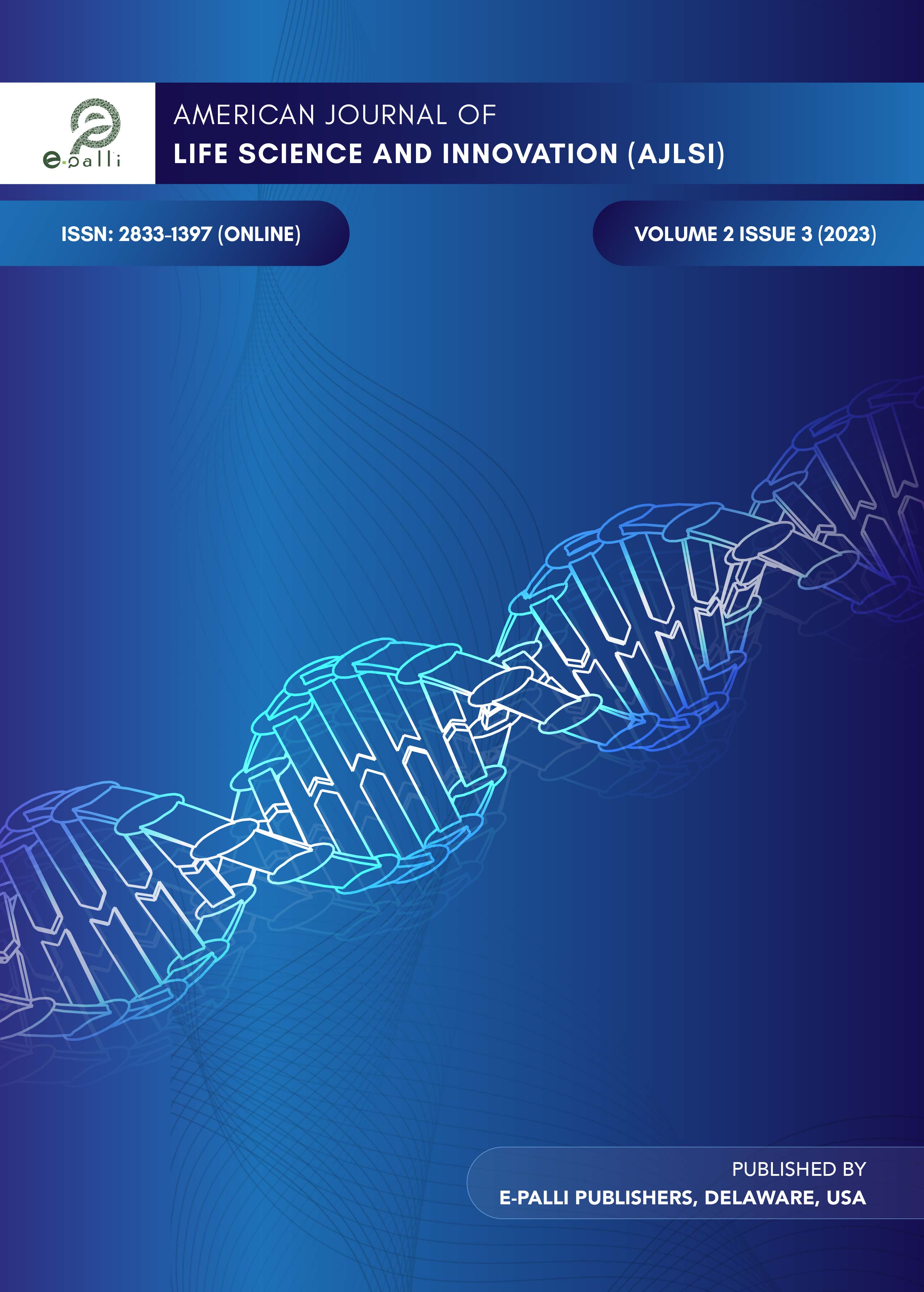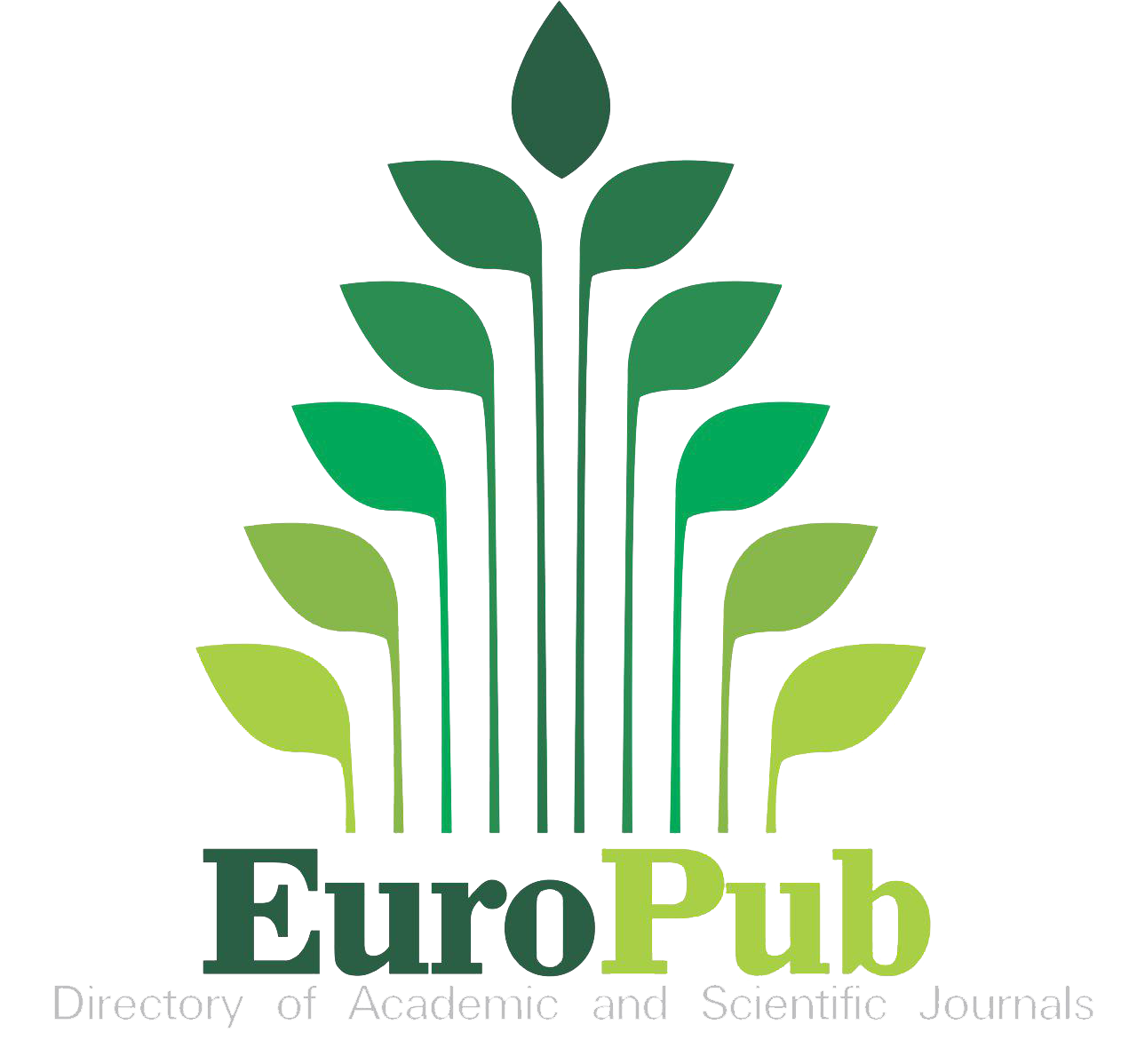Reproductive Biology and Histological Pattern of Hilsa Shad (Tenualosa ilisha) in Bangladesh
DOI:
https://doi.org/10.54536/ajlsi.v2i3.1973Keywords:
Histology, Gonad, Tenualosa Ilisha, BangladeshAbstract
An experiment was carried out to identify the peak breeding season of Hilsa in Bangladesh using gonadal histology through the standard procedure. A total 480 Samples were collected from Meghna River, Chandpur, from July 2012 to June 2013 and Tentulia river, Barisal, from June 2013 to June 2014. Histological sections of gonads were analyzed and ovarian and testicular stages were determined according to the OECD Guidance Document for Diagnosis of Histopathology of Fish Gonads. Maturing germ cells were observed every month where a higher amount of mature germ cells was found in December, January, and September to October, with a high in October. From February to June, the mature germ cells were less. Histological observations of testis suggested that T. ilisha spawns throughout the year, but significant spawning takes place in September-October and December-January with a high abundance of SPT (spermatids). During October, mature germ cells were mostly evident, and SPZ (spermatozoa) was in high proportion inside the LU (lumen of tubules). The gradual maturation of germ cells from early to ripened stages inside the testicular LU and peak maturity came during October. Females having ovaries at mature stages were considered those spawning or near to spawn. The occurrence of mature ovaries examined by external characteristics began in January and continued up to December. Percentage (%) occurrence of mature ovaries started to increase in February, peaked in October (75%), and decreased in December, January, and April. In fish ovary, the mature stages are generally observed at the most advanced stage of the ovary when the fishes are ready for spawning and when mean GSI values are comparatively high. In this study, advanced mature oocytes were found from in every month during the study period. The histological study of oocyte development and examination of external characteristics of ovaries suggested that T. ilisha spawns throughout the year, but significant spawning takes place in October –November and peaks in October.
Downloads
References
Agarwal, N. K. (1996). Fish Reproduction, APH Publishing Corporation, New Delhi,157.
Ahmed, M. B. U., Ahammad, A. K. S., Shahjahan, M., Rabbi, M. F., Alam, M. A., Sakib, M. N., et al. (2020). Age, growth and maturity of the Indian Shad, Tenualosa ilisha through otolith examination from different habitats in Bangladesh. Egypt. J. Aquat. Biol. Fish. 24, 343–359.
Akhter, T. (2011). Reproductive cycle of giant river catfish Sperata seenghala from the Sylhet basin (Doctoral dissertation, Thesis MS, Department of Fisheries).
Alam, M. S. (2009). Length-weight relationship and reproductive physiology of three Endangered Pabda fishes from Sylhet basin (Doctoral dissertation, MS Thesis, Department of Fisheries Management, Bangladesh Agricultural University, Mymensingh. 61pp.
Andrade, R. F., Bazzoli, N., Rizzo, E., & Sato, Y. (2001). Continuous gametogenesis BOBLME (Bay of Bengal Large Marine Ecosystem) (2012). Management Advisory for the Bay of Bengal Hilsa Fishery. Regional Fisheries Management Advisory Committee. 6.
Brown-Peterson, N. J., Wyanski, D. M., Saborido-Rey, F., Macewicz, B. J., and Lowerre-Barbieri, S. K. (2011). A standardized terminology for describing reproductive development in fishes. Mar. Coast. Fish. 3, 52–70.
Coad, B. W., Hussaina, N. A., Ali, T. S., & Limburg, K. E. (2003). Biodiversity, Status and Conversation of the World Shads. American Fisheries Society, Bethesda, Maryland. 123.
DoF (2020). Jatiyo Matsya Saptaho Sonkolon. Department of Fisheries, Ministry of Fisheries and Livestock. in the neotropical freshwater teleost, Bryconops affinis (Pisces: Characidae). Tissue and Cell, 33(5), 524-532.
Lee, C. F., Liu, K. M., Su, W. C., & Wu, C. C. (2005). Reproductive biology of the common Ponyfish Leiognathus equulus in the south-western waters off Taiwan. Fisheries Science, 71(3), 551-562.
Matsuyama, M., & Matsuyama, S. (1982). Ovarian Maturation and Ovulation of the Amphidromous type Ayu, Plecoglossus altivelis in Chikugo River Based on Histological Observations. Bulletin of the Japanese Society of Scientific Fisheries, 48, 1573-1582.
Maya, M. (2011). Histological study of gametogenesis in threatened Mystus cavasius. MS thesis, Department of Fisheries Management, Bangladesh Agricultural University, Mymensingh, Bangladesh.
McAdam, D.S., Liley, N.R. & Tan, E.S. (1999). Comparison of reproductive indicators and analysis of the reproductive seasonality of the tinfoil barb, Puntius schwanenfeldii, in the Perak River, Malaysia. Environmental Biology of Fishes, 55, 369–380.
McConnell, R., & Lowe-McConnell, R. H. (1987). Ecological studies in tropical fish communities. Cambridge University Press.
Panhwar, S. k, Siddiqui, G., & Zarrien, A. (2011). Reproductive pattern and some biological features of anadromous fish Tenualosa ilisha from Pakistan. Indian Journal of Geo- Marine Sciences, 40(5), 687-696.
Pillay, S. R., & Rosa, H. (1963). Synopsis of biological data on Hilsa, Hilsa Ilisha (Hamilton, 1822). Food and Agricultural organization of the United Nations. FAO. Fish Biology, 25-64.
Shinkafi, B. A., Ipinjolu, J. K., & Hassan, W. A. (2011). Gonad maturation stages of Auchenoglanis occidentalis (Valenciennes 1840) in River Rima, north-western Nigeria. Journal of Fisheries and Aquatic Science, 6(3), 236.
Siddiquee, A. (2012). Reproductive biology of great snakehead Channa marulius from the Sylhet basin, MS Thesis, Department of Fisheries Management, Bangladesh Agricultural University, Mymensingh, Bangladesh.
Wallace, R. A., & Selman, K. (1981). Cellular and dynamic aspects of oocyte growth in teleosts. American zoologist, 21(2), 325-343.
Downloads
Published
How to Cite
Issue
Section
License
Copyright (c) 2023 Md. Hashibur Rahman, Bimal Chandra Das, Md. Moniruzzaman, Mousumi Akhter, Sabequn Nahar Swati, Tahamina Khatun, Md. Mizanur Rahman, Harunur Rashid

This work is licensed under a Creative Commons Attribution 4.0 International License.







